Poaching and hunting are distinct activities with different impacts on wildlife and ecosystems.
Poaching is illegal and unauthorized; it targets animals for trading their parts, like ivory and pelts, illegally for profit. It severely threatens biodiversity, causing significant declines in wildlife populations.
Hunting, in contrast, is a legal, regulated activity aimed at sustainable wildlife management. It requires permission and follows guidelines to guarantee the conservation of species and habitats. Legal hunting supports conservation efforts through funding and helps control species overpopulations, contributing to ecological balance.
Key Takeaways:
- Poaching vs. Hunting: Poaching is illegal and targets animals for profit, threatening biodiversity, while hunting is legal and regulated.
- Motivations Behind Poaching: Poaching is driven by the lucrative illegal wildlife trade.
- Consequences of Poaching: Poaching leads to significant declines in wildlife populations, disrupting ecosystems and biodiversity worldwide.
- Hunting’s Role in Conservation: Legal hunting may support conservation through funding, wildlife management, and overpopulation prevention.
- Ethical Considerations: Legal, regulated hunting can be ethical when respecting wildlife populations and habitats, contrasting with destructive and illegal poaching practices.

Defining Poaching and Hunting
Poaching is an illegal activity that harms wildlife, while hunting is a regulated practice that is sometimes used for conservation efforts and biodiversity control.
Poaching, fundamentally, is the unauthorized or illegal hunting, capturing, or killing of wildlife. This illegal activity often aims at acquiring animal parts such as ivory, horns, or pelts for profit, severely threatening wildlife populations and the balance of ecosystems.
In contrast, hunting is a legal, regulated activity that requires specific permission or permits from wildlife management authorities. Legal hunters abide by established guidelines for sustainable wildlife management and conservation.
While poaching leads to the decline of iconic and treasured species, disrupting natural habitats and food chains, legal hunting is sometimes used in conservation efforts. It can help control wildlife populations to prevent overpopulation and disease spread and generate revenue for conservation programs.
Legal hunting can benefit local communities by incentivizing the protection of natural habitats against poachers and supporting conservation education and initiatives.
Motivations Behind Poaching
The primary motivator behind poaching activities is the lucrative market for illegal wildlife products such as ivory, rhino horns, and pangolin scales.
Illegal wildlife trade thrives on the high demand for these products used in traditional medicines, ornaments, and luxury items, driving poachers to target iconic species and putting them toward extinction.
The financial incentives are significant, as illegal wildlife products can fetch high prices on the black market, making poaching an attractive, albeit illegal, source of revenue.

Poaching is a well-organized operation that exploits the vulnerabilities of wildlife populations. The pursuit of elephants, rhinos, and other wildlife for their valuable parts has led to drastic declines in their numbers. Tragically, this has resulted in the extinction of species like the Western Black Rhino.
Consequences of Poaching on Wildlife
Poaching severely impacts wildlife populations worldwide. It threatens the survival of iconic species such as lions and undermines biodiversity and ecological balance. The consequences of poaching on wildlife are profound and far-reaching, affecting not just individual animal populations but entire ecosystems.
In Africa alone, poaching has led to a staggering 30-50% decline in the lion population over the last two decades. With only 32,000 lions remaining in the wild, losing these apex predators can disrupt ecological equilibriums, affecting other species and their habitats’ health.
Over 650 lion carcass trophies are exported annually from Africa, highlighting the scale of this issue. Poaching can affect the survival of this species and diminish genetic diversity, which is essential for lion populations’ resilience to changing environments and diseases.
Hunting Role in Conservation
Unlike hunting without legal permission, which often poses significant threats to wildlife populations, regulated hunting activities carried out by licensed professional hunters can contribute to conservation objectives.
Hunting generates revenue through permits and licensing fees, directly contributing financially to protecting habitats and endangered species.
Legal hunting can help manage wildlife populations, preventing overpopulation that can lead to human-wildlife conflict and ecosystem imbalances.
Legal Boundaries of Hunting
Legal hunting operates within a framework designed to promote the ecosystem, necessitating hunters to acquire legal permission before engaging in the activity. This aims to guarantee that hunting practices contribute positively to conservation efforts.
Conclusions
Poaching, driven by illegal wildlife trade, poses a severe threat to biodiversity and iconic species, while legal hunting, when conducted ethically and within regulations, can help in conservation efforts.
Collaborative efforts involving governments, law enforcement agencies, conservation organizations, and local communities are important measures to tackle the problem of poaching.
On the other hand, hunting requires strengthening regulations, increasing awareness, and supporting sustainable wildlife management to help protect wildlife.



